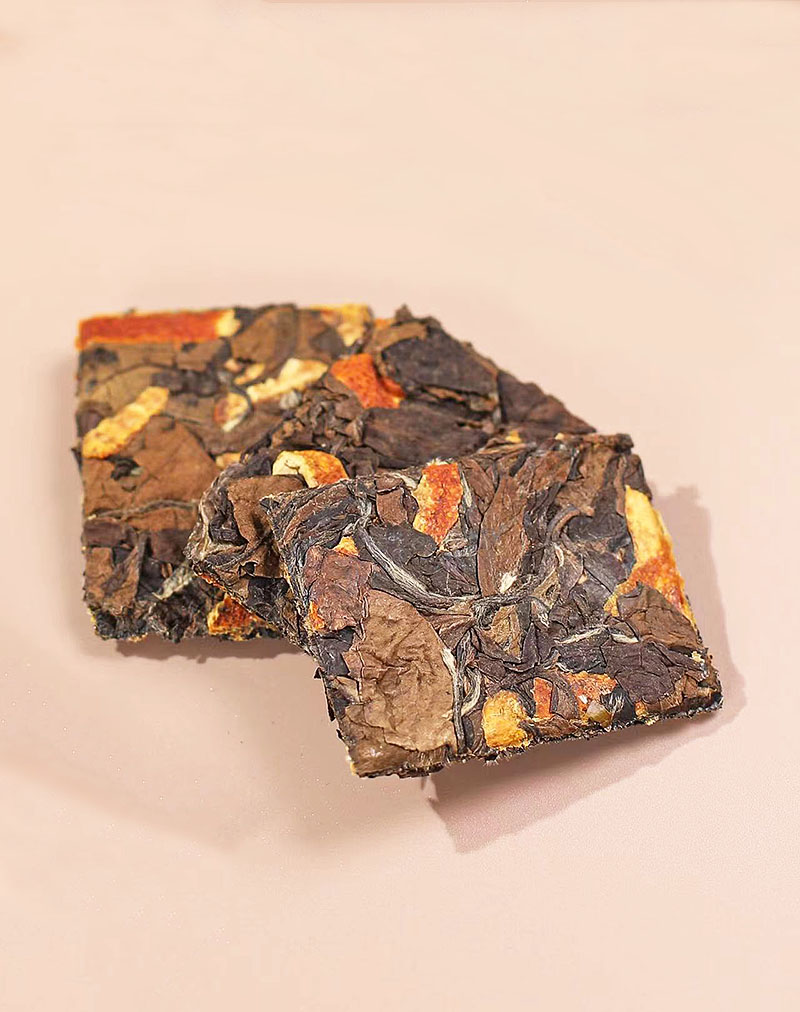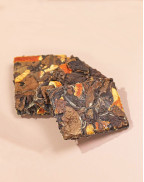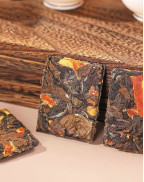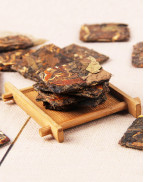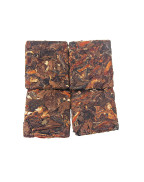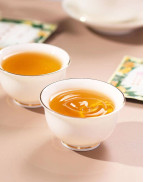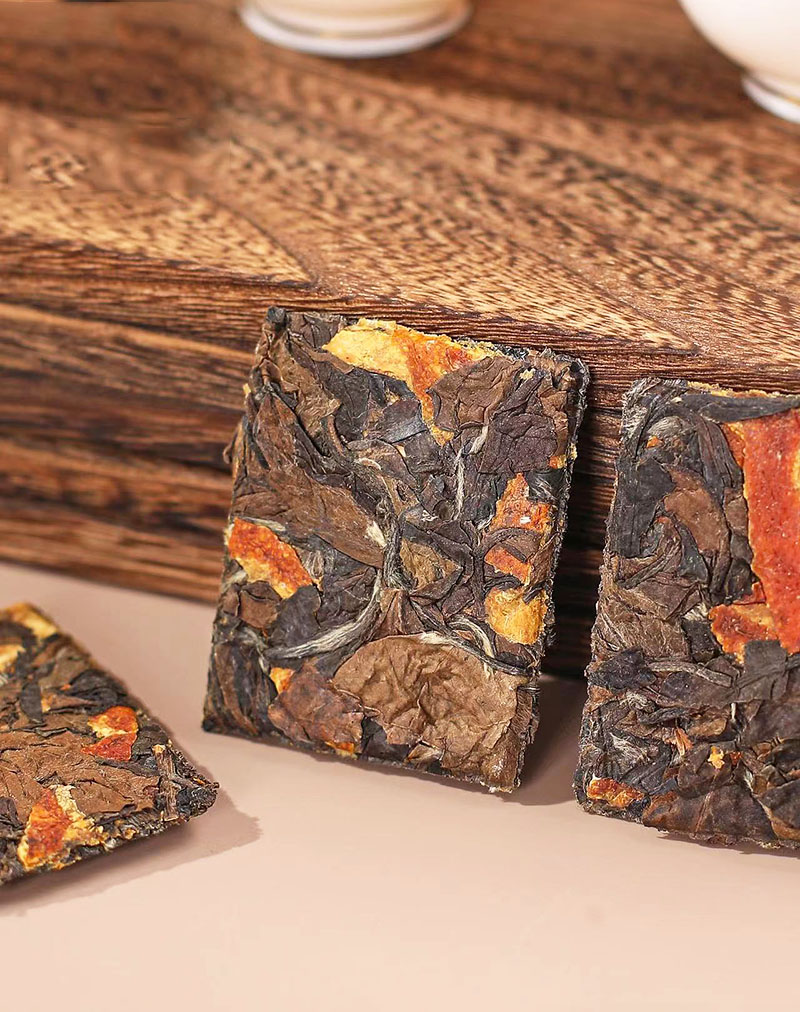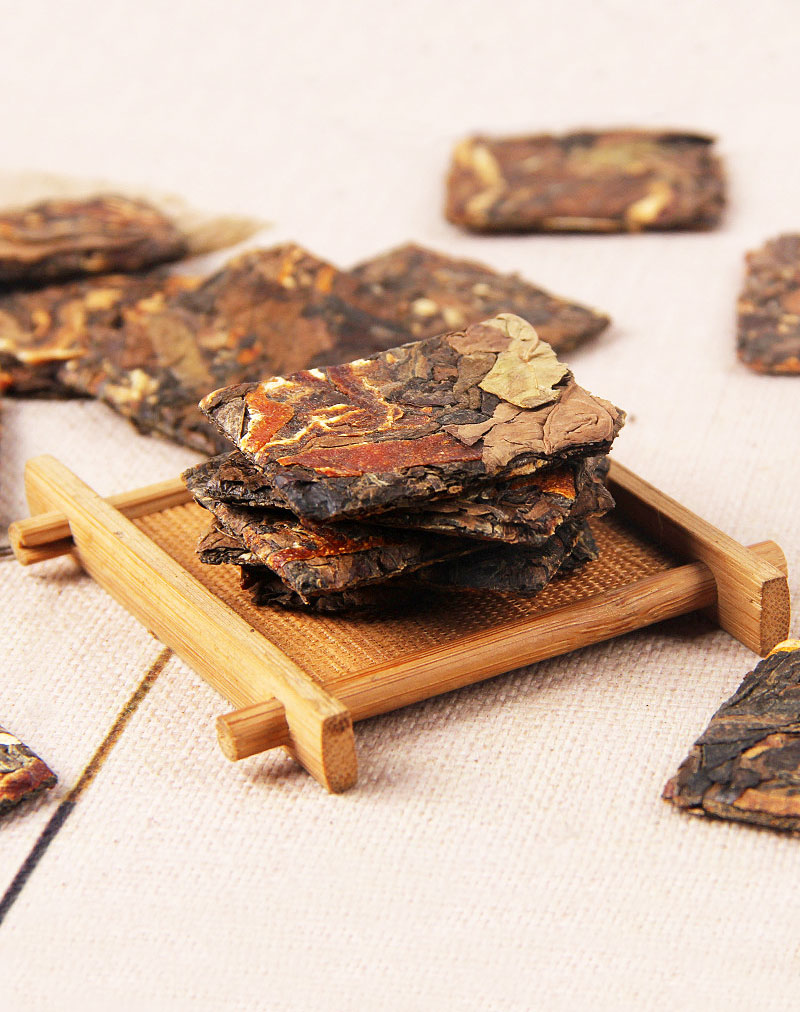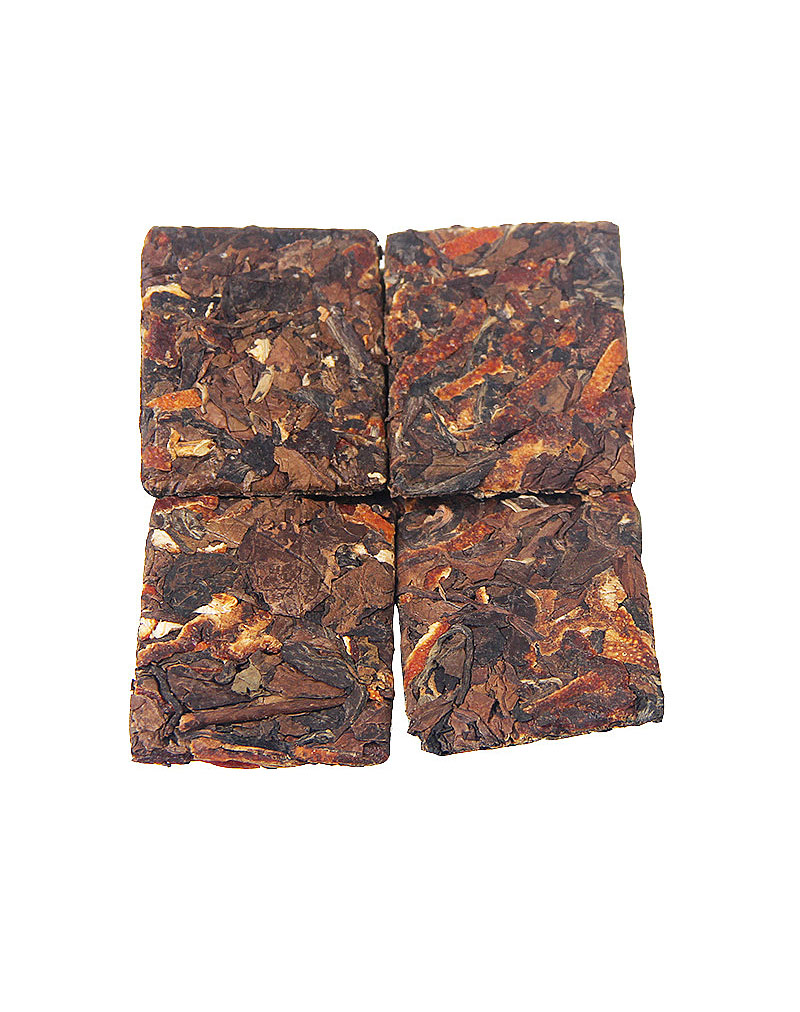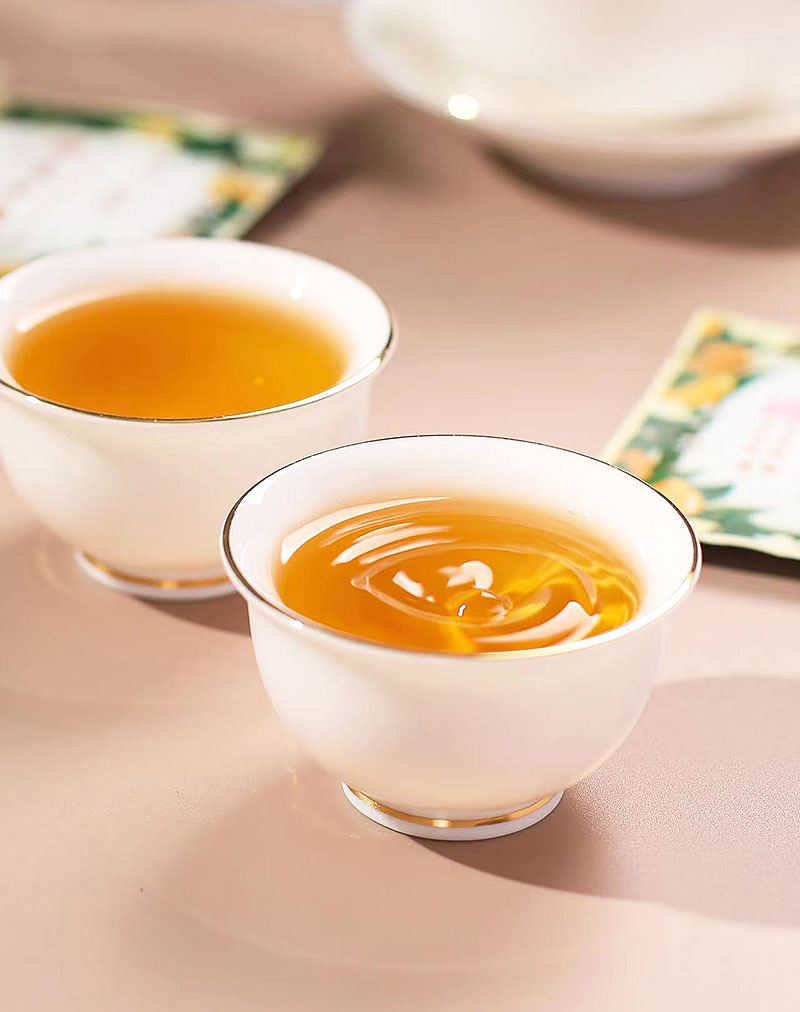Tangerines Peel (Chenpi) White Tea
- Product Code: simple
- Availability: In Stock
Basic Info
Name: Tangerines Peel (Chenpi) White Tea
Other Names: Chenpi White Tea
Category: White tea
Origin: Fuding City, Fujian Province
Tea Bush: Fu Ding Da Hao
Taste & Aroma: Highly refreshing, tangerines peel aroma, aged white tea flavor,milder
Liquor: Yellowish,clear and bright
Harvest Period: June 2023
Altitude: 600M above sea level
Fermentation: Light
Item Form: Thin small squares
Ingredients: Xinhui Chengpi /100% hand-picked natural tea buds and leaves
Tree Species: Fuding Dahao
Shelf Life: Long-term preservation
Storage: Stored in cool, airtight, opaque containers
Flavor: Unflavored
Caffeine: Low
Tangerines Peel (Chenpi) White Tea
Tangerines Peel (chenpi) white tea is a tea product primarily made from white tea leaves supplemented with
dried tangerine peel (chenpi). Chenpi is sun-dried citrus peel that, after undergoing special processing, develops a
unique aroma and flavor.
Tangerines Peel (chenpi) white tea is crafted using Xinhui chenpi and Fuding white tea as raw materials, employing a unique drying process. The tea leaves and chenpi mutually absorb each other's essence, blending into a harmonious unity. It retains the mellow characteristics of white tea while incorporating the distinct fragrance of chenpi. The combination enhances the overall taste, resulting in a rich and full-bodied flavor with a delicate, sweet, and refreshing mouthfeel, and it possesses a high tolerance for brewing.

Using Traditional Methods To Make Xinhui Tangerine Peel
Show Full Description
Sidenote: If you want to learn more about tangerine peel, such as its health value and production process, click here to view it.
Introduction to Chenpi (陈皮) and Fuding White Tea:
Xinhui chenpi, one of the "Three Treasures of Guangdong," boasts a long history and widespread reputation both domestically and internationally. With over 900 years of traditional history, there are numerous stories about Xinhui chenpi in Chinese history.
Legend has it that the cultivation of chenpi in Xinhui originated in the Song Dynasty (960-1279), and it has a history of more than 900 years. The "Yuan Dade Nanhai Zhi," a local chronicle from the Yuan Dynasty (1271 - 1368), recorded information about Guangdong Province (including Xinhui), indicating that chenpi had already become one of the famous "Guang goods" in the North-South trade. During the Ming and Qing Dynasties (1616 - 1912), fueled by the prosperity of the sunflower industry, the reputation of chenpi soared. Xinhui merchants, taking advantage of the convenience of transporting sunflower products, mass-exported chenpi to other provinces, establishing the renowned status of Xinhui chenpi and sunflower fans, collectively known as the "Two Wonders."
Tea Tree Variety
Fuding Dahao tea is a very famous tea tree variety. The variety originated from Wangjiayang Village, Fuding County, Fujian Province. In 1984, it was recognized as a national excellent tea tree breed in China. Originally from Wangjiayang Village in Diantou Town, Fuding City, it was twice recognized as a nationally promoted excellent breed in 1965 and 1973, and listed as the standard control species for national regional trials. In 1985, it was designated as a national variety, with the code GS13002-1985, commonly known as "Hua Tea No. 2".

Fuding Dahao Tea Tree
History
The production history of Tangerines Peel (chenpi) white tea can be traced back to the Ming Dynasty (960-1279). During that period, farmers in Fujian discovered that blending dried tangerine peel with white tea and roasting them together produced a unique aroma and flavor. They began experimenting with combining chenpi and white tea, gradually developing a distinctive tea-making technique. This craft saw further refinement and promotion towards the end of the Ming Dynasty, becoming a popular tea variety.
Production Process
Authentic Xinhui chenpi with higher years of aging holds greater value. It can be used in tea blending, stored for centuries, used in cuisine for flavoring, and even utilized in traditional Chinese medicine. Fuding white tea, a Geographical Indication Protection product, is renowned for its "one-year tea, three-year medicine, seven-year treasure" reputation, aligning well with the characteristic of aged chenpi, known for its prolonged goodness. The combination of chenpi and white tea creates a new type - Tangerines Peel (chenpi) white tea, representing another bold innovation in Chinese tea-making. The general processing steps for Tangerines Peel (chenpi) white tea are outlined below.

Sundried Xinhui Tangerine Peel
The production process of Tangerines Peel (chenpi) white tea is intricate and involves multiple steps. Firstly, fresh tangerine peels are selected, peeled, and air-dried until 80% dry. Subsequently, the tender white tea leaves are mixed with chenpi to allow for full integration. The tea leaves are then low-temperature roasted to evaporate moisture, resulting in dry leaves. Finally, the dried tea leaves undergo screening to remove impurities, yielding Tangerines Peel (chenpi) white tea.
Why Did Fuding Become The Birthplace Of Chinese White Tea?
Geographical location
Fuding is surrounded by plateaus on three sides and is located in the coastal area of northeastern Fujian. The terrain in Fuding is higher in the east and lower in the west, with large areas of undulating hills (elevations ranging from 500 to 800 meters) and many streams. There is abundant sunshine here, with a forest coverage rate of 69.3%. Taishan Mountain and Haishang Xiandu are famous tourist attractions, known for their steep mountains, spectacular rock formations, serene caves, and misty climate.

White Tea Garden In Fuding City, Fujian Province
Climate characteristics
Fuding has a subtropical maritime monsoon climate, with mild climate throughout the year and an average annual temperature of 18.5°C. The rainfall is abundant, with an annual precipitation of 1661 mm.
Soil
The soils in the white tea region of Fuding include red soil, yellow soil, dark brown soil, and alluvial soil, with red and yellow soils being the main types. The main varieties planted are Fuding Da Bai Cha and Fuding Da Bai Hao, which are nationally recognized superior tea varieties also known as Huacha 1 and Huacha 2.
A White Tea That Can Bring You a Different Taste
The flavor of aged chenpi varies with time. Chenpi aged for 1 to 3 years possesses a strong fragrance, providing a slightly stimulating sensation akin to fresh orange water. Lower-quality aged chenpi may carry some astringency. Chenpi aged for over 3 years exhibits a fragrant aged aroma, and with even more extended aging, the taste becomes milder.
Tangerines Peel (chenpi) white tea leaves bear traces of chenpi on the surface. The tea infusion is clear and bright, with a unique and intense aroma combining the fruity fragrance of chenpi and the refreshing scent of tea leaves. The taste is fresh, crisp, and sweet, devoid of bitterness or astringency, making it highly enjoyable.
| Chinese Gongfu Method | |
| Tea | 4g |
| Water | Gaiwan 3oz / 90ml |
| Time | 7 infusion : rinse, 20s, 20s, 35s, 45s, 60s, 90s, 140s |
| Temperature | 95℃/203℉ |
| Teapot Method | |
| Tea | 4g |
| Water | Teapot (8oz / 240ml) |
| Time | 2- 4mins |
| Temperature | 95℃/203℉ |


